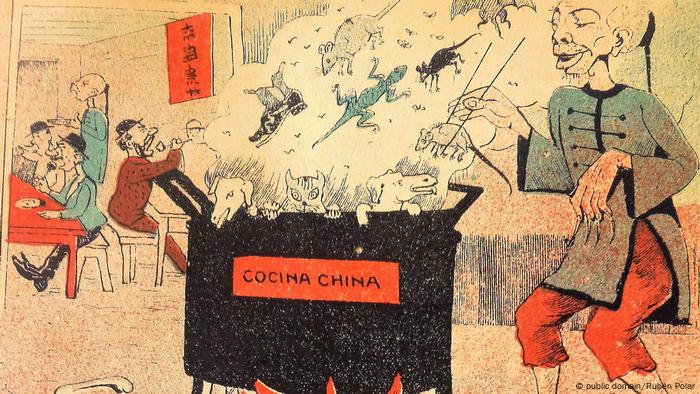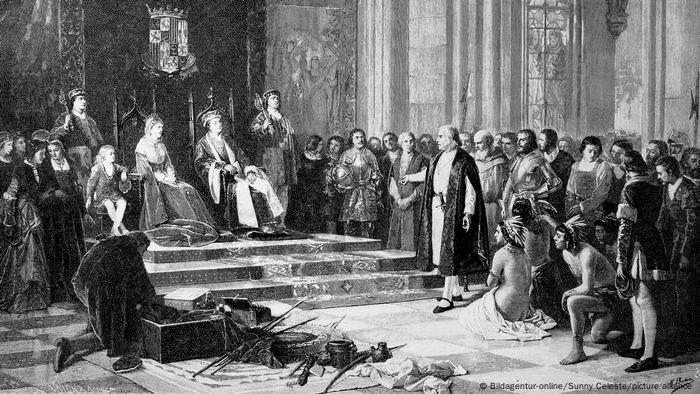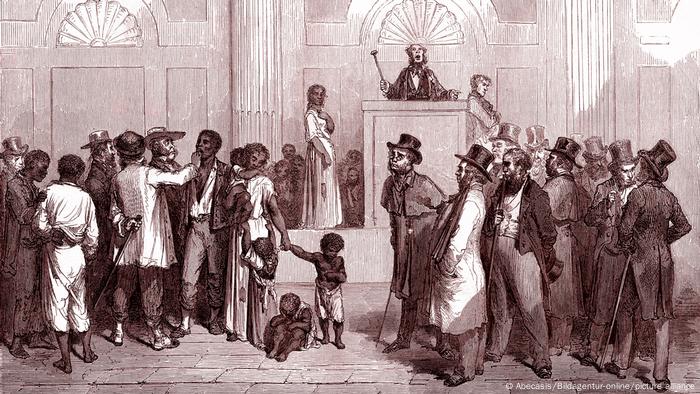Where do racist words and expressions come from? And how can these hurtful terms be replaced with better vocabulary? A new book provides some answers.

Anti-Asian racism in South America in 1907
“Words can be like tiny doses of arsenic: they are swallowed unnoticed, they seem to have no effect, and after a while the poisonous effect is there.” This quote comes from the work “LTI – Notebook of a Philologist” by the German literary scholar Victor Klemperer from 1947 and precedes the new book by Susan Arndt. “Racist Legacy: How we deal with the colonial past of our language” is the title of her work, which was published by Duden-Verlag in May and deals with racism in the German language.
Klemperer was the son of a rabbi, he however, converted to Protestantism in 1912. Despite this, he was stripped of his academic title under the Nazis. From 1940 to 1945 he lived with his wife in various so-called Jewish houses in Dresden and was only very lucky to escape deportation in 1945.
The philologist kept a diary during the war years. These records became the basis of his later publications. His observations of how Nazi propaganda affected the German language are also documented in the diaries. This was the basis of his widely acclaimed analysis after the Second World War.

Victor Klemperer
< p>Half a century later, the literary scholar Susan Arndt from Bayreuth attempts a similar analysis and examines the effect of racism on the German language – from a post-colonial perspective.
The colonial roots of racism
Arndt wrote her book after years of studying racism in Germany: “While I was analyzing racism, I became increasingly aware that words acted like signposts of this racism. A lot of racist knowledge and beliefs are manifested in a very concrete way through words ” she tells DW. “Of course, if we do without these words, racism does not go away, but we can better understand racism by analyzing them.”
The literary and cultural scholar sees the roots of racism in 1492, when Queen Isabella I of Castile and her husband Ferdinand V conquered the Kingdom of Granada in southern Spain, the last bastion of the Muslim Moors in Spain. “After this conquest, Queen Isabella of Castile began expelling Jews and Muslims, confiscating their property and levying special taxes on the premise that Christianity was fundamentally superior to other religions,” said Arndt. Money from these conquests was used to finance Christopher Columbus' expedition to India.

On his return Columbus brought “examples” to the Spanish royal couple
The legitimacy of colonial conquests
As is well known, this journey did not end in India, but in America. After Columbus, the Spanish conquerors and the European settlers spread across the continent – after all, a new world had been discovered here.
As Arndt points out in her book, genocides were committed in the conquered territories while humanistic ideals were propagated in early modern Europe. Since this was in stark contradiction to European principles, the European conquerors had to find ways to legitimize something that had no real legitimacy.
The concept of “race” was propagated to denote colonial practices that put Christians—particularly white Christian men—in the superior category. This idea was expanded in such a way that people were assigned different “races” based on their skin color, and qualities were then assigned or denied to them.
“It all boiled down to the idea that white people were the only ones capable of progress, the only ones with reason and culture,” Arndt stresses. Everything that was closer to the educated elite was considered higher than people who lived closer to nature. This then served as a justification for the Europeans to “settle nature and colonize the people who lived in it… That's how the racist system was built,” explains Arndt.
The sick racial theories of the Nazis
Black people were seen as inferior, devoid of reason and culture, ultimately justifying the enslavement of people from Africa. This idea has been internalized by white people – they consider themselves superior, adds Arndt.

A slave market in the United States, 1863
In the 19th and 20th centuries, this categorization was further supported by social Darwinism – a pseudo-scientific theory that explained the development of societies and social conditions as the result of a struggle for survival in which only the strongest and most successful prevailed.
After seizing power, the National Socialists propagated another pseudo-science: eugenics or racial hygiene, which assumed that a “race” could be further optimized – and systematically murdered around six million Jews and people with disabilities, homosexuals, Sinti and Roma and other people marked as racist.

“LTI” stands for “Lingua Tertii Imperii: the language in the Third Reich” and is a classic among the books on the language and use of language in Nazi propaganda.
Racial theories were rarely used after World War II, says Arndt, but of course racism didn't go away because of that. Although equality was demanded, “the global political and financial balance of power that had been built up over centuries by colonialism was not touched,” explains the author. “Colonialism has become a political system that has influenced many intellectually, made people perceive people by the color of their skin, whether they like it or not.”
Therefore, even today, although we think all people are equal, many Black, Indigenous, and People of Color are consistently excluded from white privilege. And because neither structures, institutions nor discourses or moral values are possible without language, it is very important to deal with racism in language, says Arndt.
Five ways to identify racist language
In order to enable language use without racist vocabulary, people would have to actively decide which words they use in their language use – and thus decide which remain part of the active vocabulary. That's why it's very important to make a certain effort to recognize racist vocabulary, writes Arndt.
She suggests five ways to identify racist expressions: 1. When and where did the expression originate? Does it come from the colonial era and how does that show? Has its original meaning been changed and what remains of it today? 2. Does the phrase imply that there are “races of men”? Does the phrase suggest that the person being addressed is “close to nature” and “distant from sanity”? 3. Does the expression hark back to colonial notions or clichés, such as a “half-naked person wearing feathers”? 4. In what context is the term used? 5. Does the term exclude people from a “white” norm?
Watch video 03:04
How do black people live in Germany?
She gives several examples from the German language, such as “Native American”, “Buschmann”, “Eskimo” and many more. In a later chapter, Arndt proposes other designations that reveal the racist background, such as: “Diaspora”, “BiPOC”, “People of Color”.
In conclusion, Arndt advocates using such expressions in everyday life to identify language – but not to ban it. “I don't believe in language bans. That doesn't do us any good, because even if the expressions aren't said, people don't reflect and don't change the internalized images either. That doesn't lead to a change in the power structures.”
< p>It's about people no longer hesitating to talk about racist words and terms so that there is more understanding in society – also among white people. It would be ideal if they then distanced themselves from racist use of language. That is the goal of her book, says Susan Arndt.
Adaptation from English: Julia Hitz.